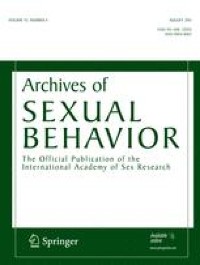
Body Piercing, Personality, and Sexual Behavior - Archives of Sexual Behavior
The associations of body piercing with other social characteristics, personality, and sexual behavior were investigated in a population-based sample of young adults, in light of the theory that body piercing has meaning in terms of a corporeal expression of the self. At age 26 years, 966 (95%)...
The associations of body piercing with other social characteristics, personality, and sexual behavior were investigated in a population-based sample of young adults, in light of the theory that body piercing has meaning in terms of a corporeal expression of the self. At age 26 years, 966 (95%) of 1019 members of the birth-cohort of the Dunedin Multidisciplinary Health and Development Study were asked about body piercing (at interview) and sexual behavior (questions presented by computer). Assessment of personality traits was conducted at ages 18 or 21 years. In total, 183 participants (9% of the men and 29% of the women) had piercings at a site other than the earlobes. People who lived outside New Zealand or who were of Maori descent were more likely to be pierced, but unemployment and low occupational status were not significantly related to piercing. Women who were pierced, compared with those without piercings, were more likely to have personality traits of low constraint or high negative emotionality. Women with piercings were also more likely to report having had, during the previous year, five or more heterosexual partners (odds ratio, 5.8, 95% CI: 2.3-14.6) or any same-sex partner involving genital contact (odds ratio, 10.3, CI: 2.9-37.2). The associations with sexual behavior in men were weaker and not statistically significant. In this population, body piercing in women was associated with sexual behavior. Having multiple heterosexual partners or any same-sex partner was very rare among women without piercings. The theory of meaning for body piercing was generally supported, offering the possibility of a richer understanding of this phenomenon in the general population.